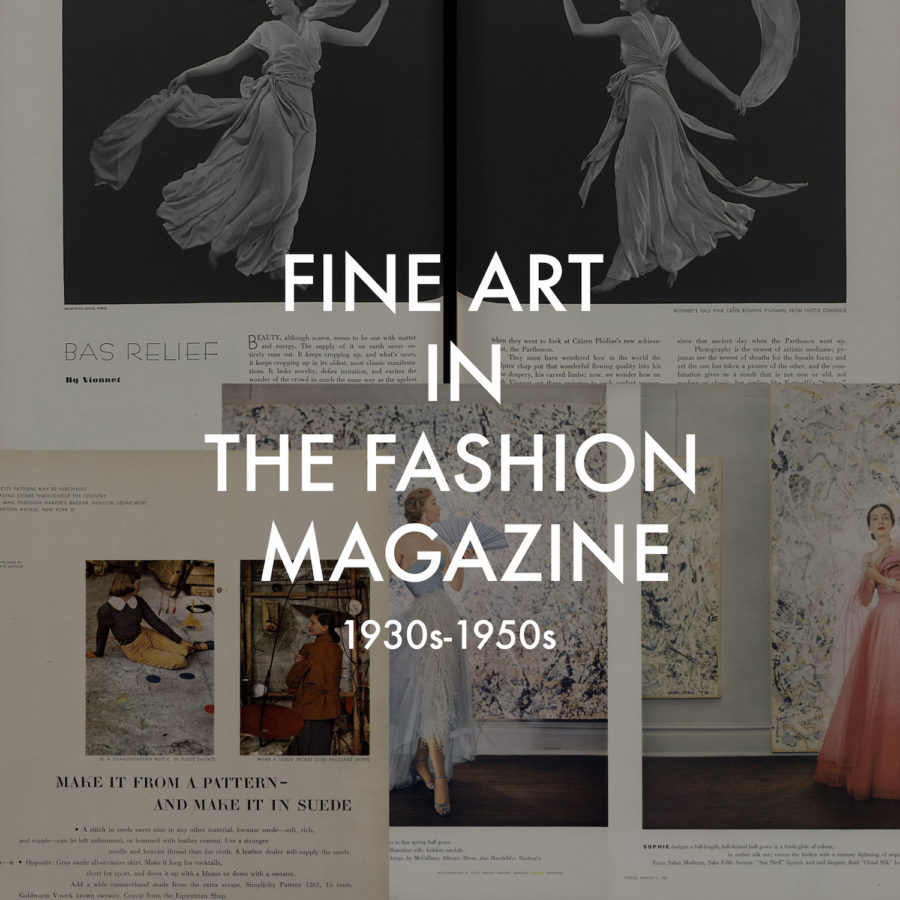What is the working title of your dissertation?
I’m trying to come up with something more creative but right now it is: “More Than a Backdrop: Fine Art in the Fashion Magazine 1930s-1950s”
What led you to choose this subject?
Well literally all of my academic research has investigated the intersection between art and fashion in some way so continuing to look at this relationship was a given. I wrote one of my previous MA essays on the fashion magazine as a designed object so I also wanted to build on that research. I love the way image, text and layout work together in fashion magazines to construct ideas of femininity as well as national identity for readers. I found art historians who had dismissed the use of art in fashion magazines, saying fashion simply used art as a backdrop to sell clothing. So, I wanted to assert that actually art and fashion work together to create significant aesthetics and messages.
I had always planned to write about classicism and couture in the 1930s because I have a low-key obsession with all things Greco-Roman and I’m fascinated by modern classicism. But about a month before we had to choose our topics I kept thinking about photographs by Cecil Beaton of models in eveningwear in front of Jackson Pollock paintings, and earlier this year I also came across photographs by Genevieve Naylor of models in Alexander Calder’s studio and then I was interested in modern art and fashion. I thought I had to choose between classicism or modern art but Rebecca (shout-out to Rebecca Arnold!!) helped me realize I was essentially looking at the same thing: art and fashion in magazine editorials. So, I didn’t have to choose and I really think it is the perfect topic for me.
Favorite book/article you’ve read for your dissertation so far and why?
In my quest to tie together art, fashion, and mid-century American politics I found a fantastic article by Alex Taylor about how Calder’s sculptures were used for both U.S. cultural propaganda and Latin American dissent during the Cold War.
Also, I got to re-visit the catalog from my favorite Met Costume Institute exhibition, 2003’s Goddess: The Classical Mode which spotlighted fashion designer’s affinity for the classical.

Favorite image/object in your dissertation and why?
A Vogue 1931 editorial “Bas Relief” featuring George Hoyningen-Huene’s photographs of Madeleine Vionnet evening pyjamas where the model is actually lying down against a dark background but it looks like she floats while her dress swirls around her. The meeting of timeless classical imagery and modern photography is breathtaking and Hoyningen-Huene is my favorite photographer AND Vionnet is the best – it just doesn’t get any better.

Favorite place to work?
I can only focus in my room or in the Courtauld library








